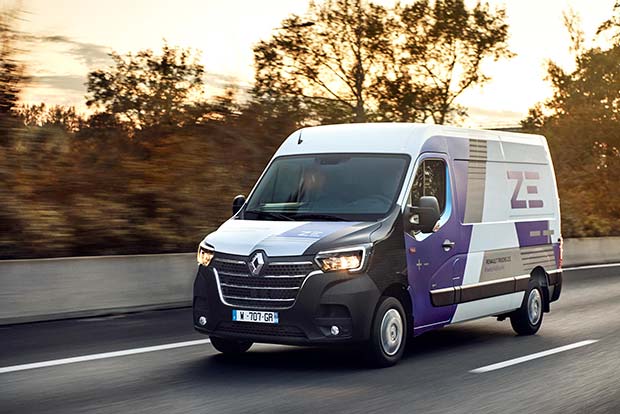Recently the Government released its plans in bringing forward the cessation of new petrol and diesel powered cars and vans going on sale to 2035 and possibly even 2030. Putting aside the questions over product availability and infrastructure, there is another question that needs to be asked and that is, are fleet managers ready in making wholesale changes to their fleet acquisition policies bearing in mind they are possibly only one or two fleet rotations away from them having to be zero emission?
 For many years now people have been talking about electromobility and many have dipped their toe in the water with trying a small number of vehicles on a limited scale. However perhaps now in 2020, it is the year for seismic change and for logistics companies to really embrace the technology and look seriously at what their fleet will really look like in 2030 and where they are now on that journey.
For many years now people have been talking about electromobility and many have dipped their toe in the water with trying a small number of vehicles on a limited scale. However perhaps now in 2020, it is the year for seismic change and for logistics companies to really embrace the technology and look seriously at what their fleet will really look like in 2030 and where they are now on that journey.
Your next fleet replacement cycle, assuming it is 5 years in duration, will take the new fleet renewals purchased in 2020 out to around 2026, so you possibly could carry on as you have done previously, but this is likely to be the last ever rotation based on old thinking. In addition to this at the end of this rotation, you are faced with a dilemma; is this the last hurrah for diesel or should you go for an alternative zero emission alternative? One of the factors that might, affect your decision, is residual values as it could be that come 2026, the expected residual value position of a traditional diesel vehicle at 5 years might be so poor that the costs make it prohibitively expensive.
Additionally, there are indirect costs of running more diesel vehicles such as LEZ charges which may increase to further drive down the number of diesels entering our cities.
In order to give some rational thinking and decision making to this dilemma and against the backdrop of increasing vehicle availability within the LCV marketplace, more companies are moving into a percentage of electric vehicle purchases within their fleet renewal programme. This often has a progressive slant with a plan to increase this percentage year-on-year as technology improves and they become more familiar with the new vehicles and their range. What this means is that by the time 2030 to 2035 does come, their reliance on diesel will be low and their whole operation, their drivers and their clients will be used to zero emission technologies.
This is, for many medium to large sized fleets, a 1 – 5 year journey plan that progressively grows; what is deemed a little ‘fringe’ now will become the norm by the mid 2020s leading up to 2030.
Of course this is not just about vehicles; having a suitable and effective infrastructure in place is also key to this transition to electromobility.
This infrastructure provision necessitates dialogue with not just your vehicle providers, but also your local energy service supplier and also in some cases, if your choice is to go electric, with the likes of National Grid. The provision of suitable energy supplies into new depot locations is also something which many people are now giving greater consideration to as even with new builds, how many of these are being designed and built with considerable electromobility fleets being in situ in the very near future?
Discussions around your change to a more sustainable fleet profile and the potential changes in distribution cycles with your clients also need to take place, if they have not already. Such conversations with your clients is a really positive step forward and may even result in a more collaborative partnership, centred around new technologies and working practices.
We are entering a really exciting phase for our industry, future-proofing your business and working towards 2030, when the landscape will be very different to that of today. Actually, if you think about it, 2010 doesn’t seem that long ago, and in those ten years, not much has changed. However, the next ten years will be transformative; if you stand still, you’ll be left behind.
Renault Trucks are at the forefront of electromobility and we have a complete range of 3.1 to 26 tonne GVW vehicles available today that meet the needs of tomorrow and which are in service with customers across Europe today: real production models, operating day in day out. Infrastructure partners of Renault Trucks work with us and our clients in the provision of suitable flexible on-site infrastructure solutions from 7kWh right up to 150kWh chargers. Choosing a vehicle partner who has the expertise and experience in all areas of both traditional diesel technology as well as hybridisation and full electric, is key in making this transition from traditional fuels into the brave new world of zero emissions.
Author: Grahame Neagus.




Comments are closed.